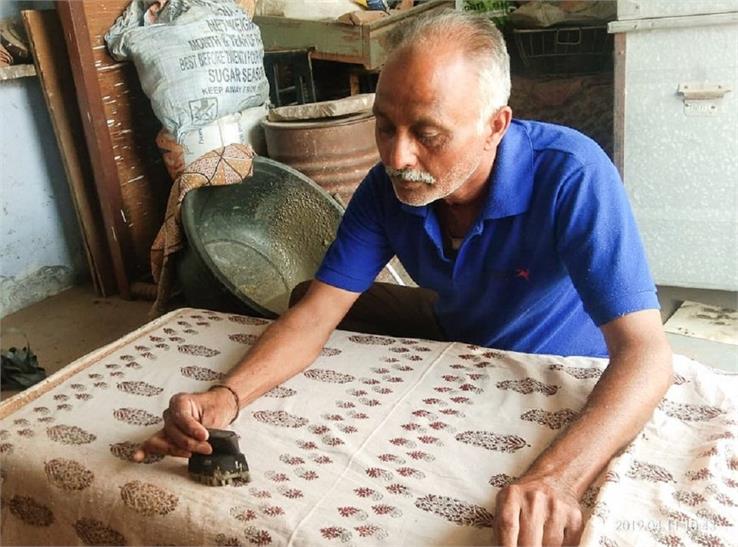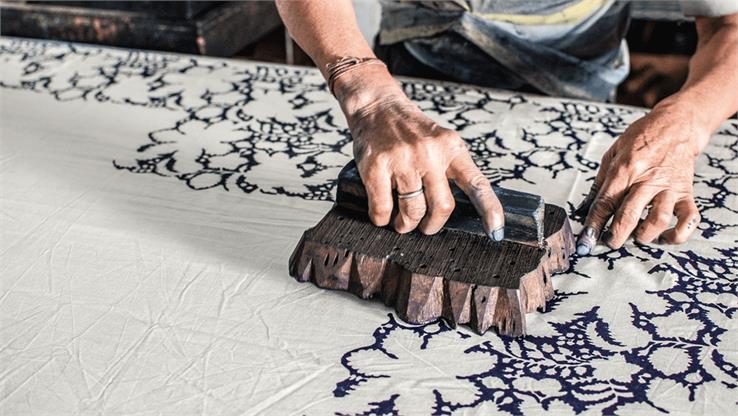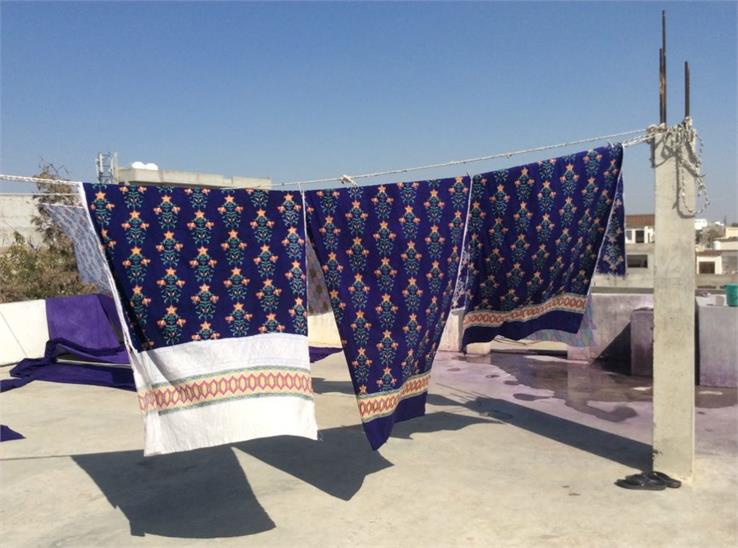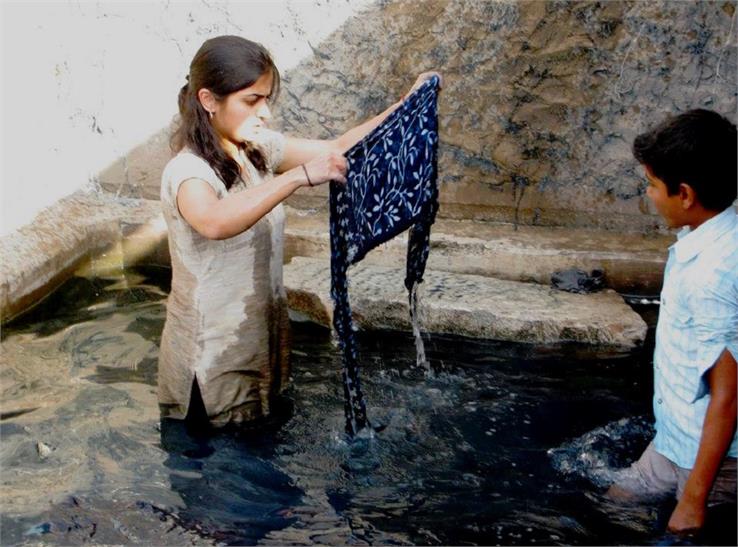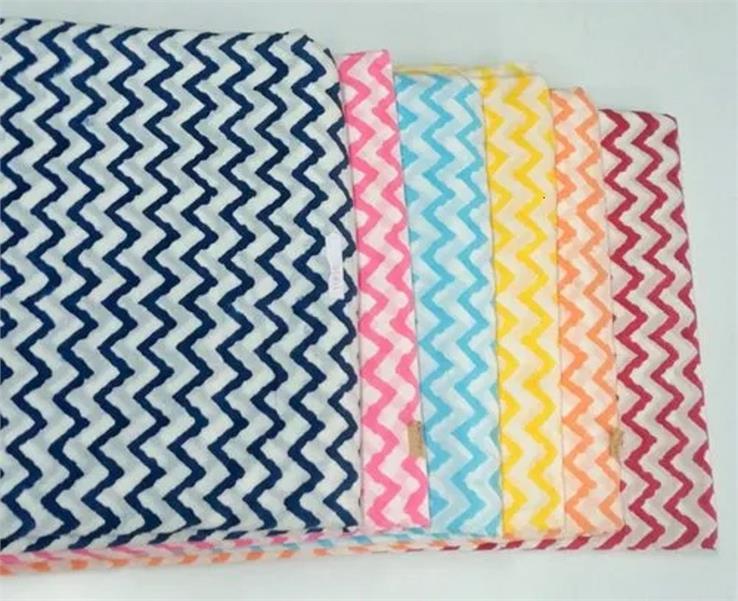5 Steps How Hand Block Printing is Done in Rajasthan

The Art Of Block Printing On Dresses in Rajasthan Will Surely Fascinate You, With Colourful And Traditional Designer Clothes.
Block printing in Rajasthan, India is another easy and beautiful way to transfer colour to paper. With printing, we can print the same pattern or any design again and again. There is no need for a brush in hand for this.
People have always loved handmade things. Whether decorating project files or making beautiful greeting cards, printing is a fun and easy way to create designs and patterns. For people in Rajasthan, colourful clothes, heavy jewellery and designer clothes are not only their hobby, but it defines their identity. According to designer Puneet Balana, the printing and dyeing of fabrics like cotton originated in Rajasthan.
Learning about the impressive history of hand block printing in Rajasthan on textiles is fascinating! It is truly remarkable how this art form has been passed down through generations and communities. The Chipa community in the village of Bagru introduced block printing to the Jaipur region, renowned for its vegetable dyes and mud resist block prints. Witnessing the beauty and craftsmanship that can arise from such a rich and cultural tradition is genuinely inspiring.
Block Printing, What It Is?
Block printing is a fascinating technique involving using a solid material to transfer ink into the fabric. The process starts with engraving a design on the block, which is then inked and used as a stamp on the fabric. The result is a beautiful mirror image of the design on the block. This technique is even more remarkable because it doesn't require machines, making it a perfect hobby for artful Americans who enjoy hands-on, creative activities.
History Behind Block Printing
It is a fact that the printing has a remarkable history in India, with roots dating back to the 12th century. It is astonishing that this traditional craft has endured for so long and is still in high demand today. Rajasthan is particularly renowned for its exquisite block print textiles, and one may wonder about the method's spread from neighbouring Gujarat. Knowing that the craft flourished in towns such as Jaipur, Sanganer, Barmer, and Pali is reassuring.
Must Read - Most Famous Shopping Markets in Rajasthan
Five Steps That Represent the Process of Block Printing
Hand block printing is an ancient technique done with natural or vegetable dyes. This art form saw its most glorious years and still survives today, competing against the fast world. It has still valued by many people who appreciate the unique beauty of this traditional printing method. A block is a wooden square piece with an engraved pattern used to print on fabric. The process is called printing, and the fabric is called a block print fabric. The printing in Rajasthan makes it a great way to make your clothing stand out.
There are several kinds of blocks , each requiring a distinct method. Today, let's learn about "DABU" , an age-old mud-resist hand printing technique. Following are the step process done in DABU block .
1. Carving

It is imperative to note that the individuals responsible for carving these blocks are the master block carvers. They have honed their craft or block printing over many years. These skilled artisans utilize a chisel and wooden hammer to intricately carve designs into the blocks, resulting in stunning patterns.
2. Printing
It is a fascinating technique using a mud resist made from Fuller's earth, gum, and other natural ingredients. Interestingly, the paste isn't mixed by hand or machine, but rather by foot, just like grapes crushed to make wine! Once the paste is ready, a block prints the fabric with the resist. The stamped areas resist any dye the fabric is dipped in. This block printing is a unique and beautiful way to create intricate designs on cloth.
Must Read - Top 9 Haunted Places in Rajasthan, you need to Avoid It
3. Drying
The drying process of printing needs the heat of the sun. After block printing, the cloth needs to dry in an open area which makes it look more effective. This work comes to a virtual standstill in July and August Monsoon seasons.
4. Dying

After the printing process, the next step involves dyeing the fabric. People of Rajasthan take pride in using only natural dyes sourced from various materials in our surroundings. For instance, flowers, leaves, spices, and metals are some of the primary sources we use. Additionally, they have been using an indigo vat that has served us for years, which is a testament to the quality of the dyeing process.
5. Washing And Drying
After dyeing, the fabrics get washed by hand. It's essential to take care of the fabric during printing to ensure that the designs come out how we want them to. Block printing is a multiple-step process involving re-printing and re-dyeing the fabric to reveal intricate details and patterns.
Block-Printed Textiles Designs Of Rajasthan
As someone who has visited Rajasthan and experienced the beauty of its textile industry firsthand, we can attest that the fabrics in this state are genuinely unique. The intricacy of weaving these textiles or their block printing is remarkable. If you plan to purchase Rajasthani textiles, we recommend buying them from the locals rather than from urban markets. Not only will you be supporting the local economy, but you will also be getting a more authentic and high-quality product. Now, let's explore the rich history of Rajasthani textiles and discover what makes them so unique.
Also Read - List of Most famous handicrafts of Madhya Pradesh
4 Best Textiles Designs Made With Block Printing In Rajasthan
1. Bandhani

Bandhani is a tie-dye fabric that gets its unique embellishment by plucking the cloth using fingernails. Bandhani has derived from the Sanskrit word "bandh," which means to tie. This tie-dye process allows for a large variety of patterns to create. Natural colours like yellow, red, blue, green, and black are used when creating Bandhani. Also, remember that the earliest examples of Bandhani work date back to 4000 BC! Finally, it is worth noting that Bandhani has been worn for symbolic purposes, with red representing a Hindu bride and yellow representing maternity.
2. Leheriya

Leheriya is an exclusive tie-dye technique from Rajasthan that creates a glistening cloth with mesmerizing patterns. This technique is often used on thin cotton or silk cloth, resulting in fabric lengths used for sarees and turbans. Indigo is a prominent colour used to dye Leheriya, giving it a dazzling and eye-catching look. It's a fun fact that Leheriya turbans was famous among men during the 19th and 20th centuries.
3. Bagru

Bagru cloth gets its name from the town where it has produced. The Chippa community uses a unique hand-block printing method and natural dyeing to create the cloth's zigzag patterns. They use vegetable and Indigo colours to dye the fabric, making it an eco-friendly option for fashion lovers. It's interesting to note that Bagru was introduced to Rajasthan in the 17th century when the Chippa community immigrated to the state to escape the social turmoil in Gujarat.
4. Kota Doria

The Kota Doria is one of the most famous textiles produced in the Kota region. This fabric is known for its lightweight feel and varied square designs or block printing. Interestingly, onion juice and rice mush are used during weaving to ensure the material's durability. Even more fascinating is that back in the 17th century, these sarees were known as Masuria Sarees. A Mughal General named Rao Kishore Singh brought these weavers into Kota and thus began the tradition of Kota Doria Sarees.
